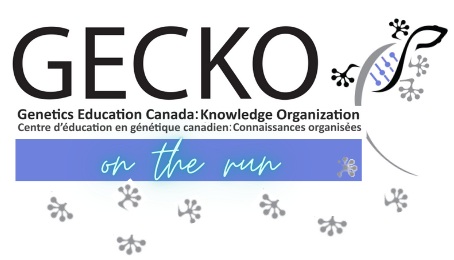Download the PDF here. Download the triage and surveillance point of care tool. Check out the more comprehensive summary, the GECKO Deep Dive. (Updated Dec 2025)
| Bottom line: Hereditary Hemochromatosis (HH) is a common inherited iron overload disorder. Affected individuals are predisposed to absorb excess iron from their diet due to improper regulation of iron homeostasis. Over time excess iron can be deposited in organs leading to dysfunction. The most common type of HH is caused by pathogenic variants in the HFE gene. Homozygosity (two copies) of the C282Y variant in this gene is associated with highest risk for iron overload. HFE-related HH is an autosomal recessive condition where one must inherit two pathogenic variants (one from each parent) to be at risk for iron overload. Most individuals with this predisposition never develop clinical disease. While HH does have the potential to cause morbidity and mortality, with early identification of at-risk individuals, appropriate surveillance of iron indices, and treatment (phlebotomy) when necessary, many complications can be avoided.
Genetic testing for HH should be considered for adult individuals with:
|
What is Hereditary Hemochromatosis?
Hereditary Hemochromatosis (HH) can be caused by harmful changes (pathogenic variants) in different genes. Pathogenic variants in the HFE gene are the cause of 95% of cases of hemochromatosis.1,2,3 This GECKO resource deals EXCLUSIVELY with HFE-associated HH.
Pathogenic variants in the HFE gene alter the regulation of iron absorption through the mucosal lining of the gastrointestinal tract. In some predisposed individuals, excessive iron absorption and subsequent storage in various organs (e.g. liver, joints, pancreas, heart) eventually lead to cellular injury. If untreated, over time this can cause irreversible tissue damage and shorten life expectancy. An individual is at risk for HH when they have inherited two pathogenic variants in the HFE gene (one from each parent, autosomal recessive). With early identification of at-risk individuals, surveillance of iron indices, and treatment when necessary, many complications can be avoided.
Who should be offered genetic testing?
Standard testing performed by molecular genetics laboratories typically involves targeted analysis for the two most common HFE pathogenic variants, C282Y and H63D. Some laboratories may also test for a rare HFE gene variant called S65C.
Genetic testing for HH should be considered for adult individuals with:
- a positive family history of HH, even in the absence of symptoms
- sustained elevation on multiple occasions of serum transferrin saturation (TS), serum ferritin (SF) levels, or aminotransferase levels (ALT) in the absence of symptoms
- TS >45% and SF >300ug/L in men and post-menopausal women or >200ug/L in pre-menopausal women.
- Elevation of ferritin alone is not necessarily due to iron overload. Ferritin is an acute phase reactant and secondary causes of increased levels may be infection, chronic liver disease, iron-loading anemia, chronic inflammatory state, or malignancy.
- Individuals with HFE-HH occasionally demonstrate a normal TS and an elevated ferritin. If clinical suspicion is high and/or the patient has a family history of HFE-HH, genetic testing is still warranted.
- ALT can be elevated in up to 14% of the general population. If ALT is elevated, consider ordering SF and TS and if those are also elevated, consider genetic testing.
- the presence of symptoms, especially two or more and, in particular, liver disease or arthritis
- mean red-cell volume >94 fL
Symptoms and clinical features of HH:
- Weakness, chronic fatigue
- Abdominal pain, weight loss
- Arthropathy (especially metacarpophalangeal joints, hips, knees)
- Diabetes
- Hepatomegaly
- Cirrhosis
- Primary liver cancer (hepatocellular carcinoma, cholangiocarcinoma)
- Hypogonadotropic hypogonadism (decreased libido and impotence in males, amenorrhea in females)
- Cardiomyopathy, arrhythmias
- Progressive increase in skin pigmentation
What does the genetic test result mean?
If an individual is found to have inherited only one HFE pathogenic variant, they are a carrier and are not expected to develop iron overload. Adult relatives can be offered genetic testing to know if they also carry the HFE pathogenic variant and possibly a second variant and thus be at risk for HH.
The actual risk to develop iron overload is dependent upon which pathogenic variants are present, in addition to other genetic and non-genetic factors. Individuals who are homozygous for the C282Y variant (C282Y/C282Y) have about a 38-50% risk to develop iron overload and about 10-33% will develop iron overload-related symptoms. Many individuals never accumulate enough iron to cause disease.4 Individuals with a C282Y and a H63D pathogenic variant (C282Y/H63D) have about a 2% chance of developing iron overload. Those who are homozygous for the H63D variant (H63D/H63D) have about a 1% chance of developing iron overload.
If no pathogenic variants are identified:
- If the individual was tested because of a known family variant, they no longer need frequent monitoring of iron indices and are not at increased risk to develop iron overload. The test has ruled out HH.
- If the individual was tested because of a reported positive family history, more information is needed before ruling out HH. Your patient should be encouraged to obtain confirmation of the familial variants and/or diagnosis.
- If the individual was tested because of persistently high iron indices, additional investigations may be considered. Consider consulting a specialist e.g. hematology, internal medicine, or gastroenterology for next steps.
Other considerations:
- Women are less likely to develop iron overload as a result of menstruation and pregnancy
- Iron overload due to HFE pathogenic variants does not occur in childhood
- Typically, symptoms of HH present in men aged 40 to 60 and in post-menopausal women; however, onset is variable and can occur much earlier or much later
- Early symptoms are nonspecific and include weakness, lethargy, joint pain and/or stiffness, and abdominal pain with or without hepatomegaly
- Before the onset of symptoms, biochemical evidence of iron overload will be present: >45% transferrin saturation (TS) and >300µg/L serum ferritin (SF) in men and post-menopausal women, or >200ug/L SF in pre-menopausal women
- Alcohol consumption can exacerbate iron overload and HH- related liver disease
Where do I refer my patient?
Across Canada, many Genetics clinics will no longer see individuals for the indication of HFE-related HH. Check your local genetics clinic for their referral criteria here. You may consider referral to a specialist e.g. haematologist or gastroenterologist for evaluation and initiation of treatment.
Surveillance and Management
Check out the GECKO Deep dive for more on Surveillance and Management of symptomatic and asymptomatic HH.
Individuals with positive genetic testing and/or family history who are asymptomatic
TS and SF levels should be measured in these individuals, and if elevated (i.e. TS (>45%) AND SF are elevated (>300ug/L in men and post-menopausal women; >200ug/L in pre-menopausal women)) further workup should proceed as outlined below. In homozygous individuals (C282Y/C282Y) with a normal SF at diagnosis, ongoing monitoring of TS, SF and liver aminotransferase every 5 years should be considered to detect progression.
Treatment
Therapeutic phlebotomy, which is both safe and effective, is the mainstay of treatment for iron overload. With treatment many complications can be avoided. Treatment is usually indicated in the presence of biochemical evidence of iron overload (i.e. TS (>45%) AND SF are elevated (>300 ug/L in men and post-menopausal women; >200 ug /L in pre-menopausal women)), or clinical manifestations e.g. end-organ damage. A SF of >1000ug/L or greater significantly increases morbidity. A genetic predisposition to iron overload (e.g. C282Y/C282Y genotype) is not, on its own, an indication for treatment in the absence of abnormal iron indices.
After initial treatment, maintenance therapy is performed to keep SF levels within the target range. Hemoglobin is also monitored. In most cases, this involves phlebotomy approximately every three months; however, the frequency varies widely and should be tailored to each patient’s individual needs.
Individuals should also be advised to avoid consuming raw seafood to minimize the risk of Vibrio vulnificus infection (a bacteria that thrives on iron), to limit alcohol intake to decrease the likelihood of advanced liver fibrosis and to avoid cast iron cookware and vitamin C supplements. Dietary iron modification does not significantly alter SF levels and is not a substitute treatment for individuals with iron overload. Individuals with two HFE gene pathogenic variants should consider the hepatitis A & B vaccines.
Resources for the public
Canadian Hemochromatosis Society. Established to create awareness about the disorder and additionally provides information and support. www.toomuchiron.ca [Accessed Dec 2025].
For References please see the GECKO Deep dive.
Authors: S Morrison MS CGC, JE Allanson MD FRCPC, S Walji MD CCFP and JC Carroll MD CCFP
Disclaimer:
· GECKO is an independent not-for-profit program that does not accept support from commercial or non-academic entities.
· GECKO aims to aid the practicing non-genetics clinician by providing informed resources regarding genetic/genomic conditions, services and technologies that have been developed in a rigorous and evidence-based manner with periodic updating. The content on the GECKO site is for educational purposes only. No resource should be used as a substitute for clinical judgement. GECKO assumes no responsibility or liability resulting from the use of information contained herein.
· All clinicians using this site are encouraged to consult local genetics clinics, medical geneticists, or specialists for clarification of questions that arise relating to specific patient problems.
· All patients should seek the advice of their own physician or other qualified clinician regarding any medical questions or conditions.
· External links are selected and reviewed at the time a page is published. However, GECKO is not responsible for the content of external websites. The inclusion of a link to an external website from GECKO should not be understood to be an endorsement of that website or the site’s owners (or their products/services).
· We strive to provide accurate, timely, unbiased, and up-to-date information on this site, and make every attempt to ensure the integrity of the site. However, it is possible that the information contained here may contain inaccuracies or errors for which neither GECKO nor its funding agencies assume responsibility.



